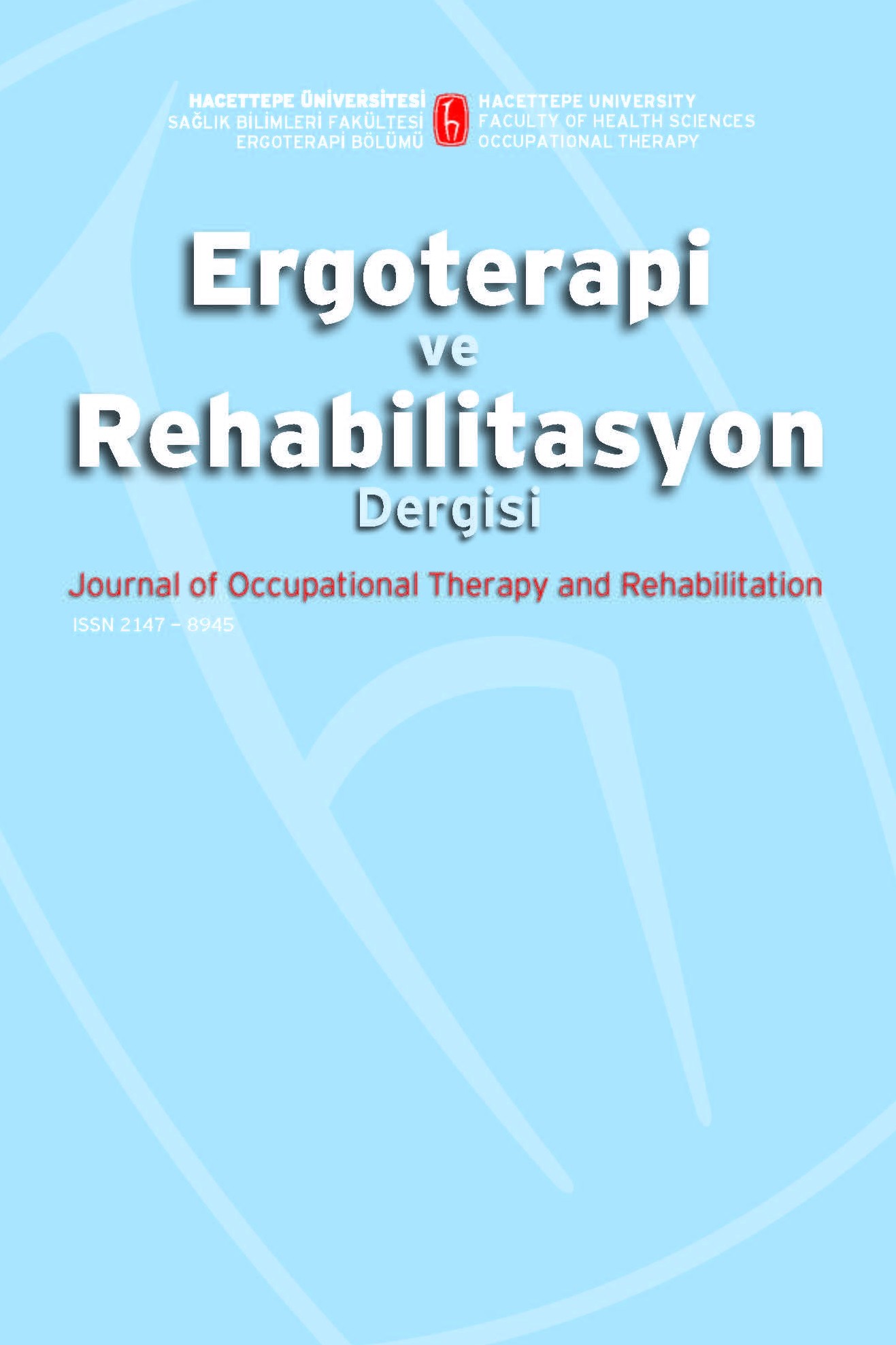Hacettepe Üniversitesi'nde Öğrenim Gören Engelli Öğrencilerin Karşılaştıkları Sorunları Değerlendirme
Amaç: Üniversite öğrencilerinin birçok ihtiyaç ve sorunlarının olduğu bilinmektedir. Engelli gençler bu ortak sorunların haricinde engelin doğasına bağlı olarak çok daha fazla problemler yaşamaktadırlar. Çalışmamızın amacı üniversitemizde öğrenim gören farklı engel gruplarını ve bu gruplardaki öğrencilerin yaşadığı sorunları ve önceliklerini belirlemektir. Gereç ve yöntem: Bu çalışmada Engelli Öğrenci Biriminin 2010-2012 yılları arasında engelli öğrencilerle ilgili oluşturduğu dosyalar değerlendirilmiştir. Çalışma, demografik özelliklerin belirlendiği bilgi formlarına ve öğrencilerin yaşadığı sıkıntıların açık uçlu sorularla sorgulandığı anketlere dayandırılmıştır.Görüşme yöntemi ile alınan veriler, betimsel analiz yöntemi ile analiz edilmiştir. Sonuçlar: Araştırmamıza göre engel grupları, yaşadıkları sorunlar ve bu sorunların söylenme frekansları ve yüzdeleri şöyle bulunmuştur. Fiziksel problemi olan öğrenciler, toplum tutumu %7, Öğretim Elemanı %2, Fiziksel Ortam %64, Sosyal-sportif faaliyet %9, Ulaşım %7, Yemekhane ve Kantin %2, Dersler %9. Görme problemi olan öğrenciler, toplum tutumu %2, Öğretim Elemanı %4, Fiziksel Ortam %38, Sosyal-sportif faaliyet %8, Ulaşım %8, Yemekhane ve Kantin %4, Dersler %28, Kütüphane %8.İşitme problemi olan öğrenciler, toplum tutumu %7, Fiziksel Ortam %22, Ulaşım %7, Yemekhane ve Kantin %2, Dersler %50.Sistemik problemi olan öğrenciler, toplum tutumu %7, Fiziksel Ortam %37, Ulaşım %14, Yemekhane ve Kantin %21, Dersler %21. Tartışma: Sonuçlar değerlendirildiğinde yaşanılan problemler ve bu problemlerin söylenme yüzdeleri arasında büyük farklılıklar çıkmıştır. Nedeninin, her engel grubunun kendine özgü sorunları olmasından kaynaklanmaktadır. Toplum tutumu ile ilgili sorunlar her engel grubunda dile getirilmesine rağmen yüzdeler çok az çıkmıştır. Bunun nedeninin rahat bir şekilde ifade edememekten kaynaklanmaktadır. Öğrencilere eğitim vermek, konuşulabilirliği artıracaktır. Ders, sınav, öğretim elemanları, sosyal ve sportif faaliyetlerle ilgili sorunlar, öğretim elemanlarına verilecek eğitimle aşılabilir.Tüm bu sonuçlar ışığında her engel grubunun yaşadığı sıkıntılara yönelik hem öğretim elemanlarına hem de üniversite öğrenci ve personeline yönelik farkındalık eğitiminin verilmesinin çoğu sorunun üstesinden geleceğini düşünmekteyiz
University students are known to have many needs and problems. Apart from these common
problems young people with disabilities, have been having a lot more problems depending on the nature
of barriers. The aim of our study was to determine different disabled groups at Hacettepe University,
and to identify the problems and priorities for each them.
Material and Methods: In this study, the files created by the Department of Disabled Students between
the years 2010-2012 were evaluated. Two types of questionnaire had been used in these files, one of
them was the information form contains the demographic datasheets and the other was the open-ended
questions for disabled students’ spesifics problems. The data received by the interview method,
were analyzed with descriptive analysis. Results: According to our research disability groups, theirproblems and complaints frequencies and percentages were found as follows. Results for the students
with physical problems; Community attitudes 7%, Instructor 2%, Physical Environment 64%, Socialsporting
activities 9%, Transportation7%, Cafeteria and Canteen 2%, Lessons 9%. Results for the
students with vision problems, Community attitudes 2%, Instructor 4%, Physical Environment 38%,
Social-sporting activities 8%, Transportation 8%, Cafeteria and Canteen 4%, Lessons 28%, Library
8%. Results for the students with hearing problems, Community attitudes 7%, Physical Environment
22% , Transport 7%, Cafeteria and Canteen 2%, Lessons 50%. Results for the students with systemic
problems, Community attitudes 7%, Physical Environment 37%, Transport 14%, Cafeteria and Canteen
21%, Lessons 21%. Conclusion: When comparing the groups, major differences were found between
percentages of the complaints and the problems. Because every disability group had different dominant
problems and complaints. All disability groups have complained about the attitude of society but,
percentage of complaints was low. The reason may be that, disabled students may not talk about their
real though comfortably during questionnaire. Problems with lessons, exams, instructors, social and
sporting activities, can be overcome with education given to the instructors.In the light of all these
results, we think. that students, instructors and personel of university were given awareness training
to overcome the many problems.
